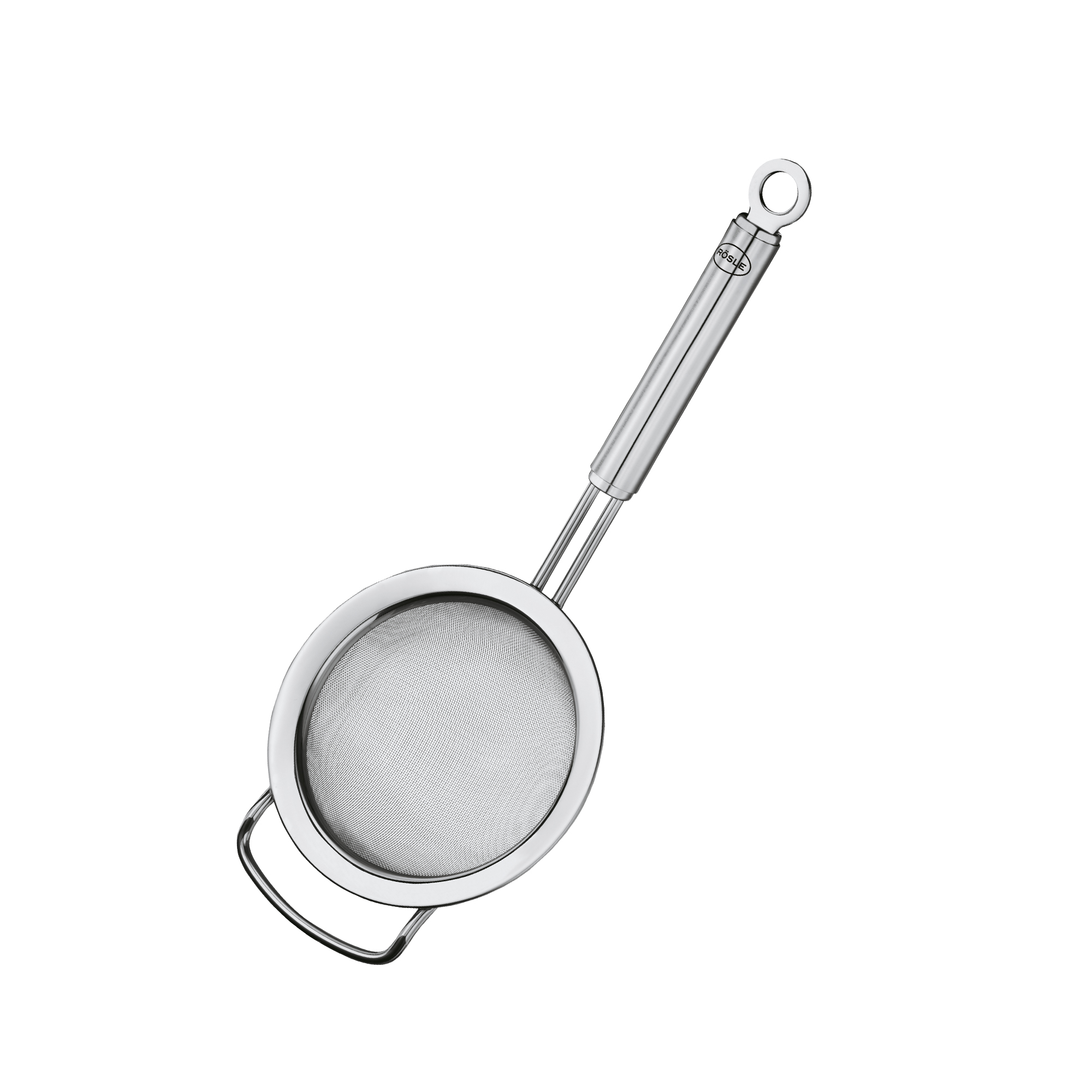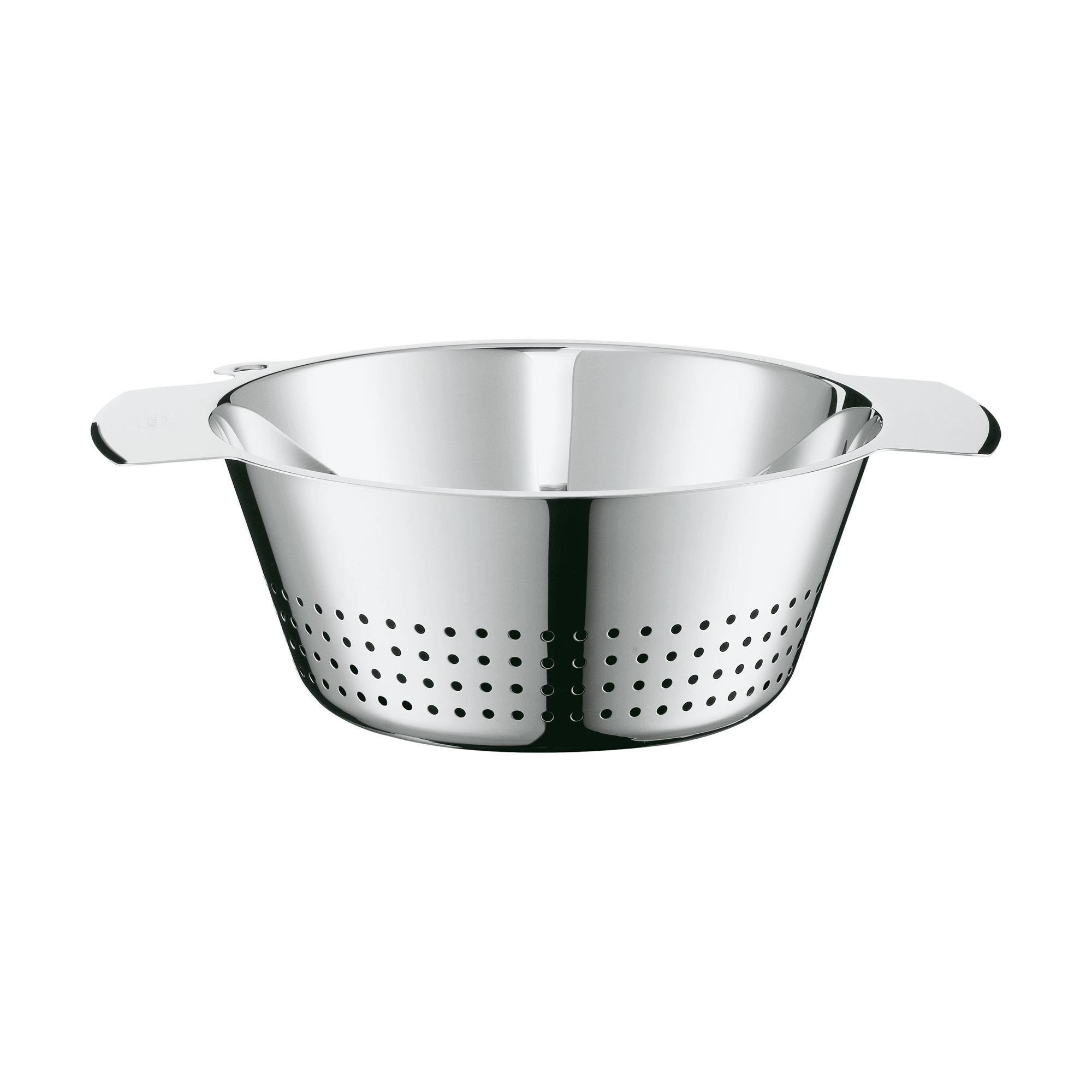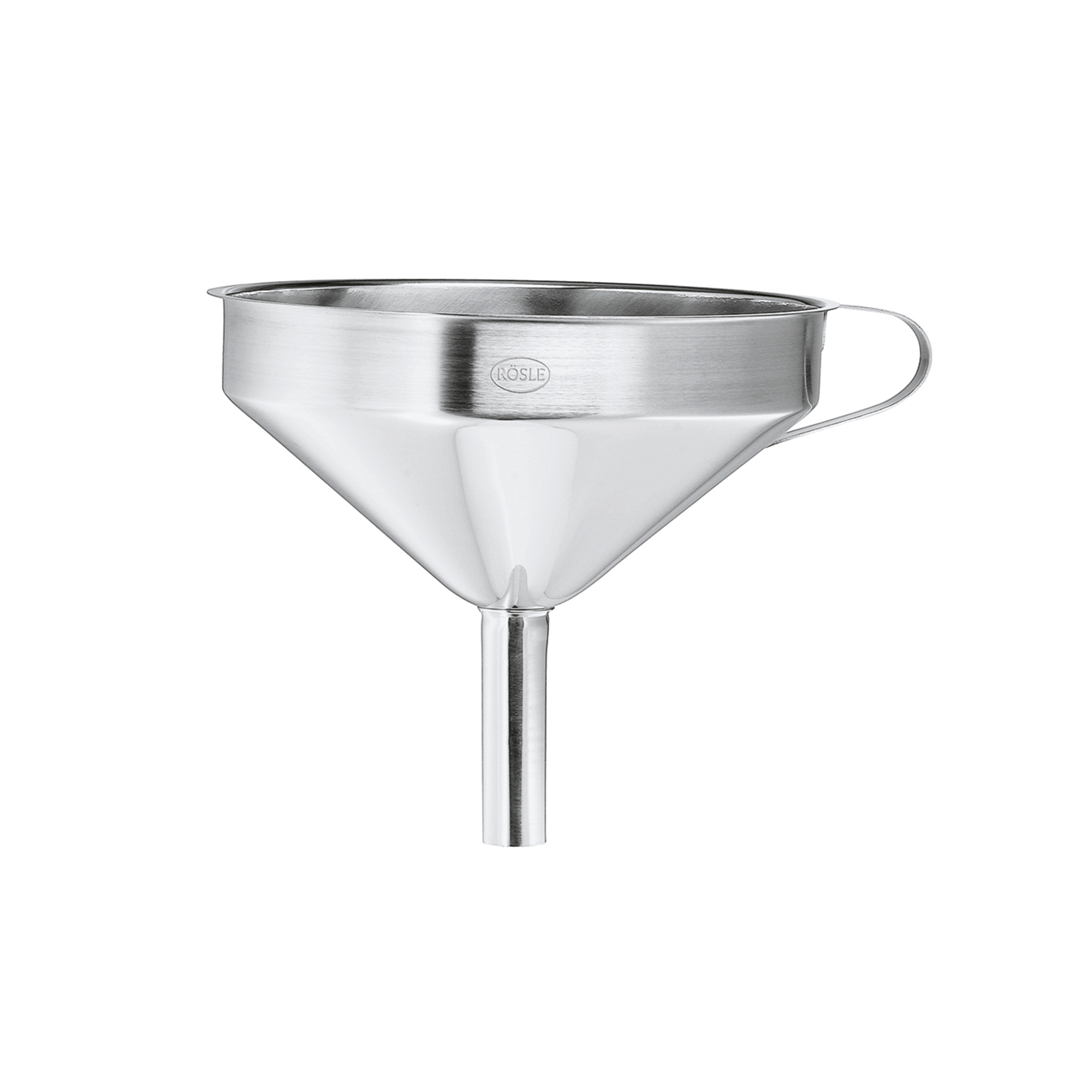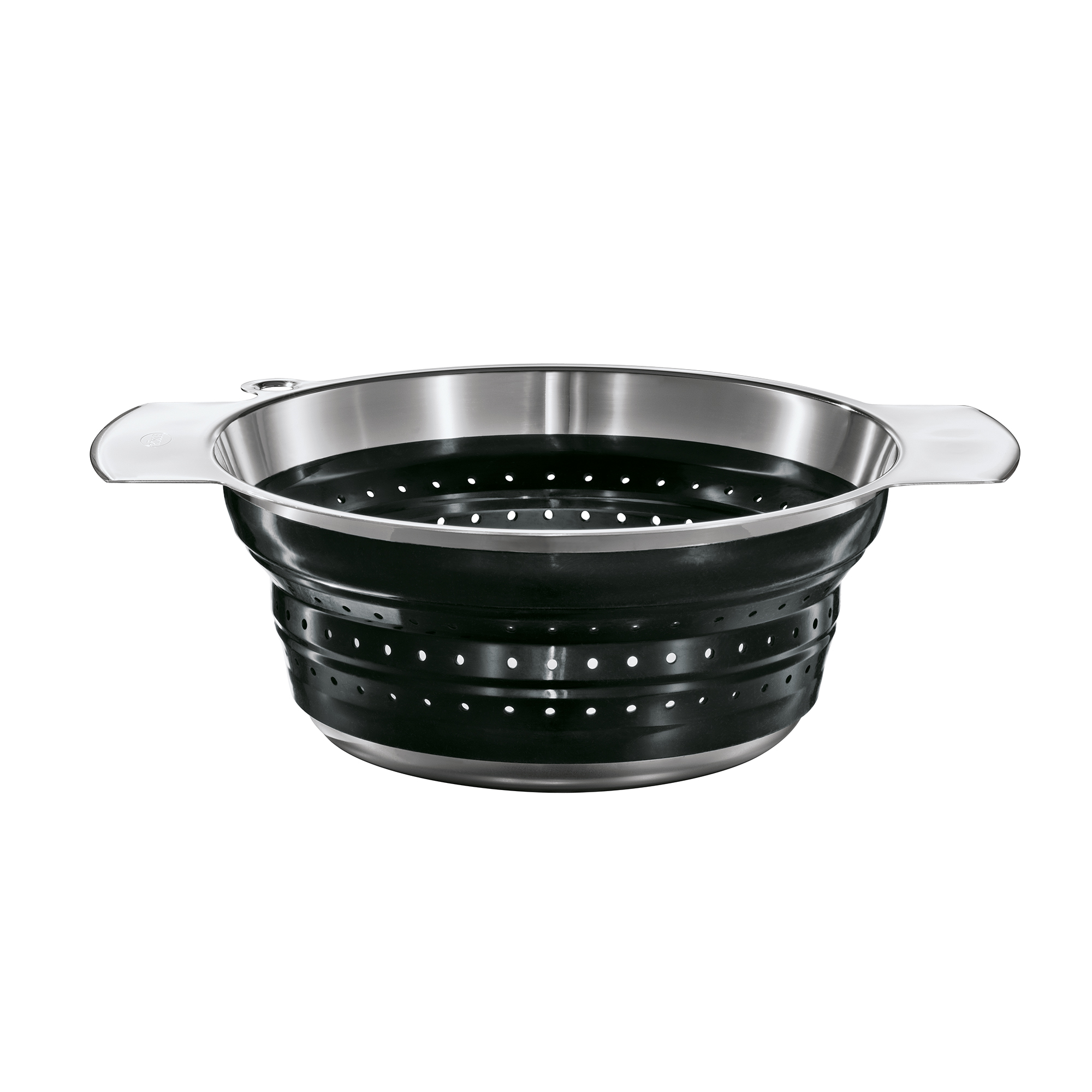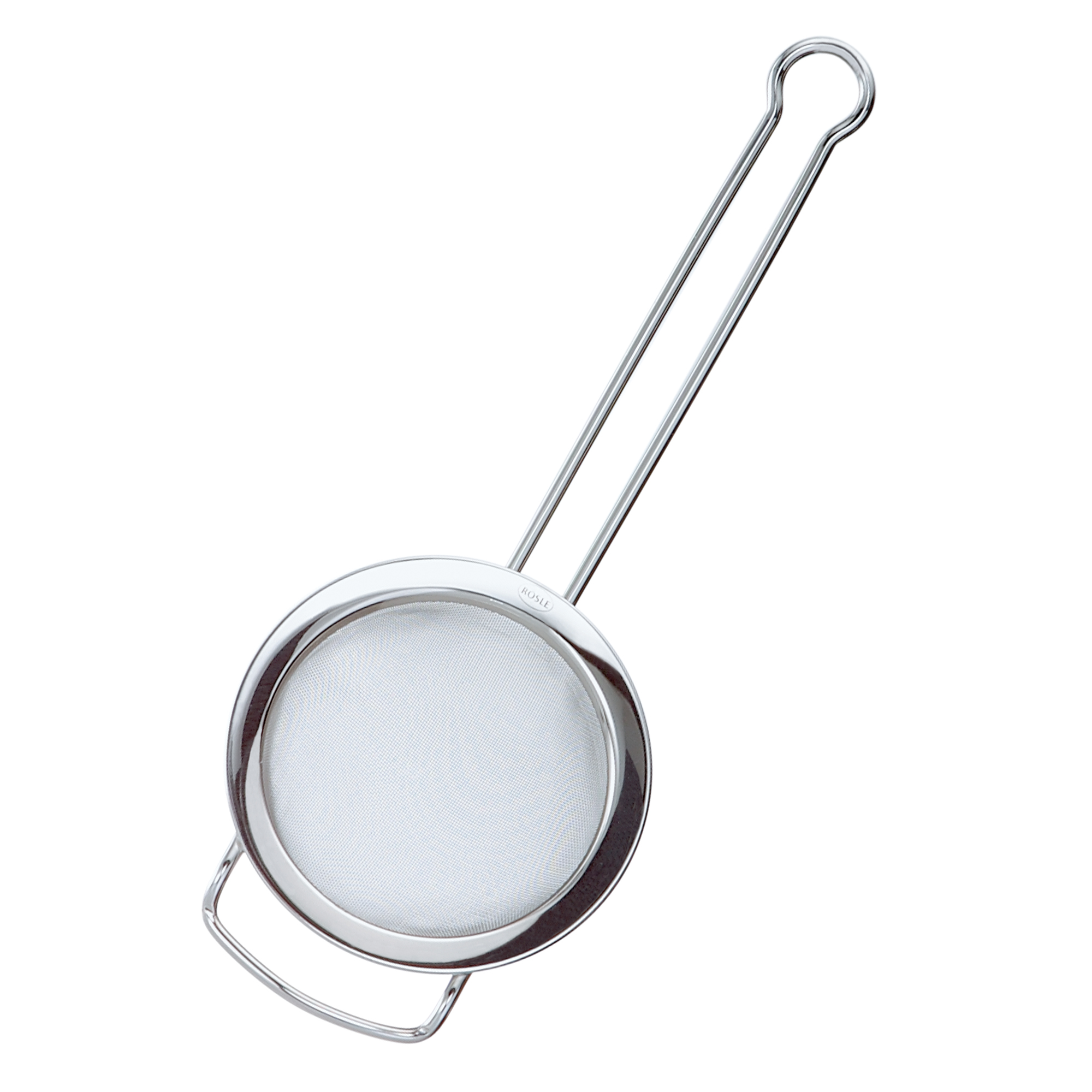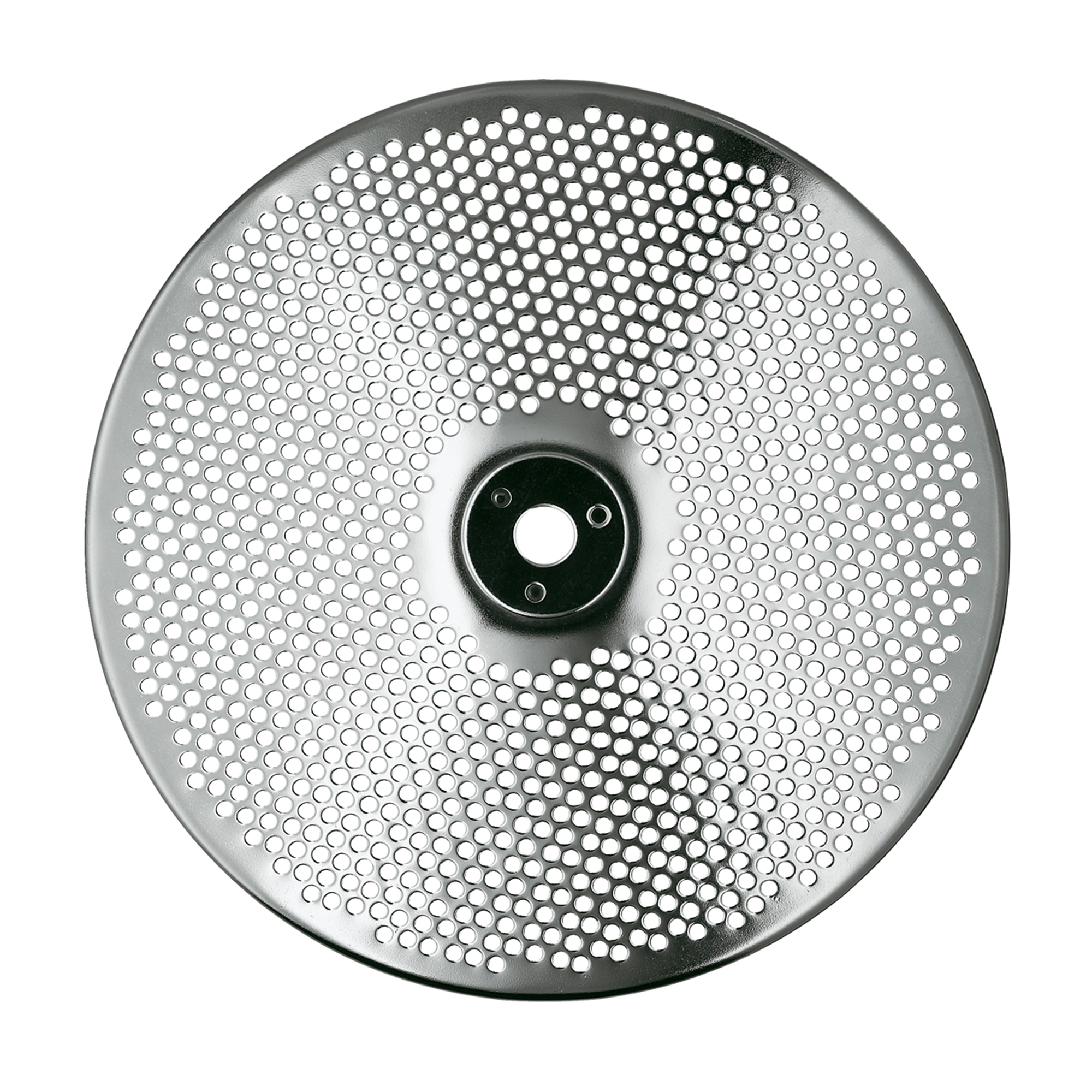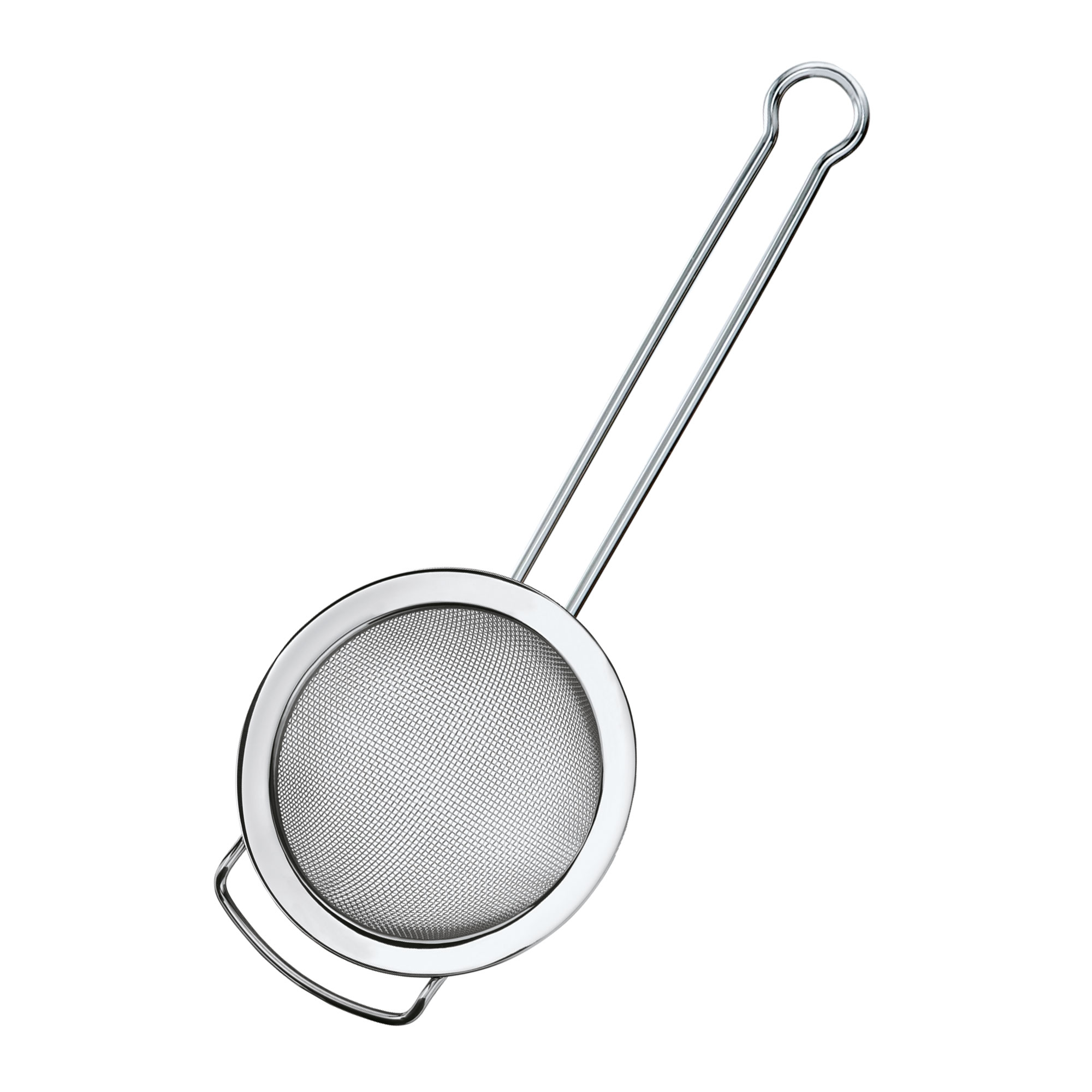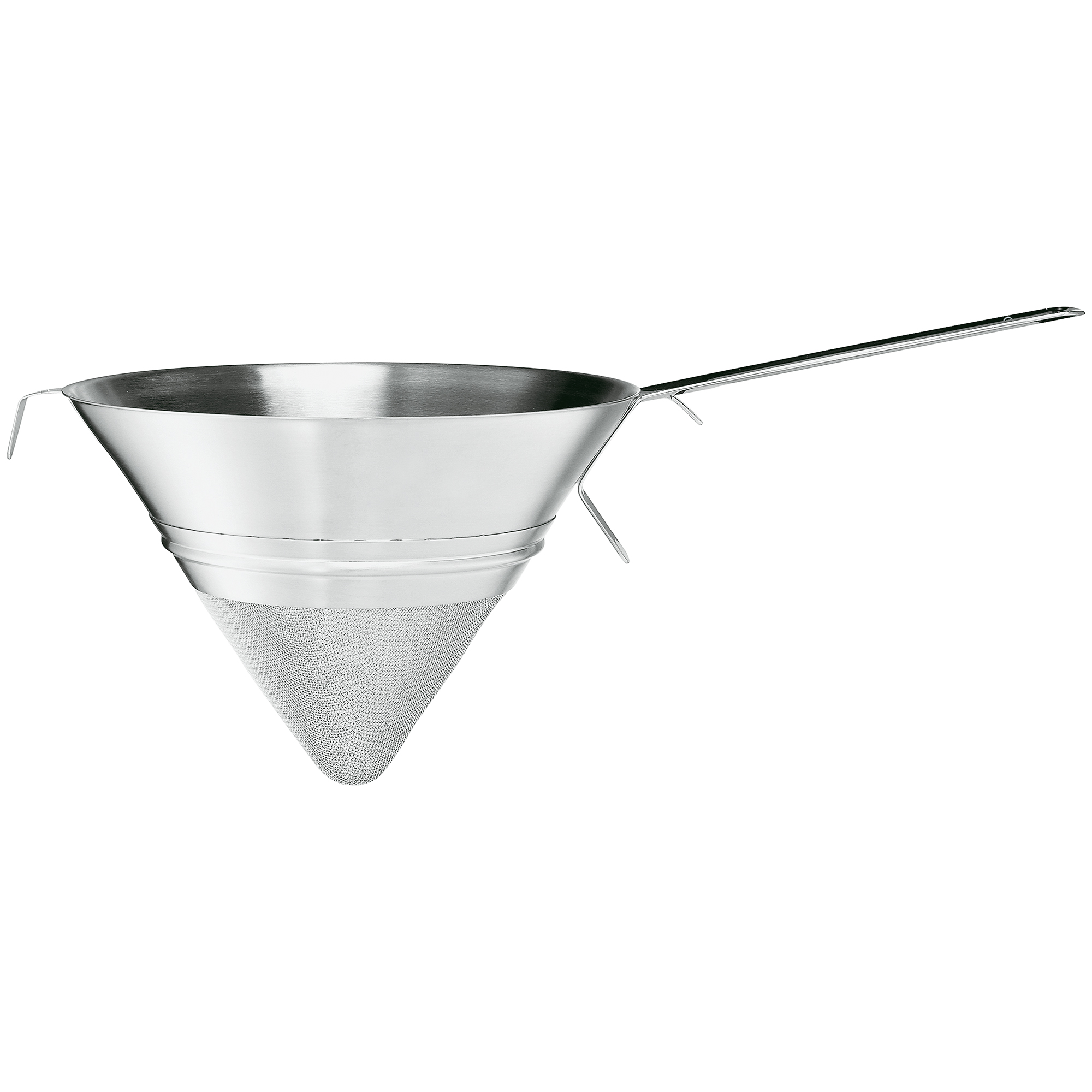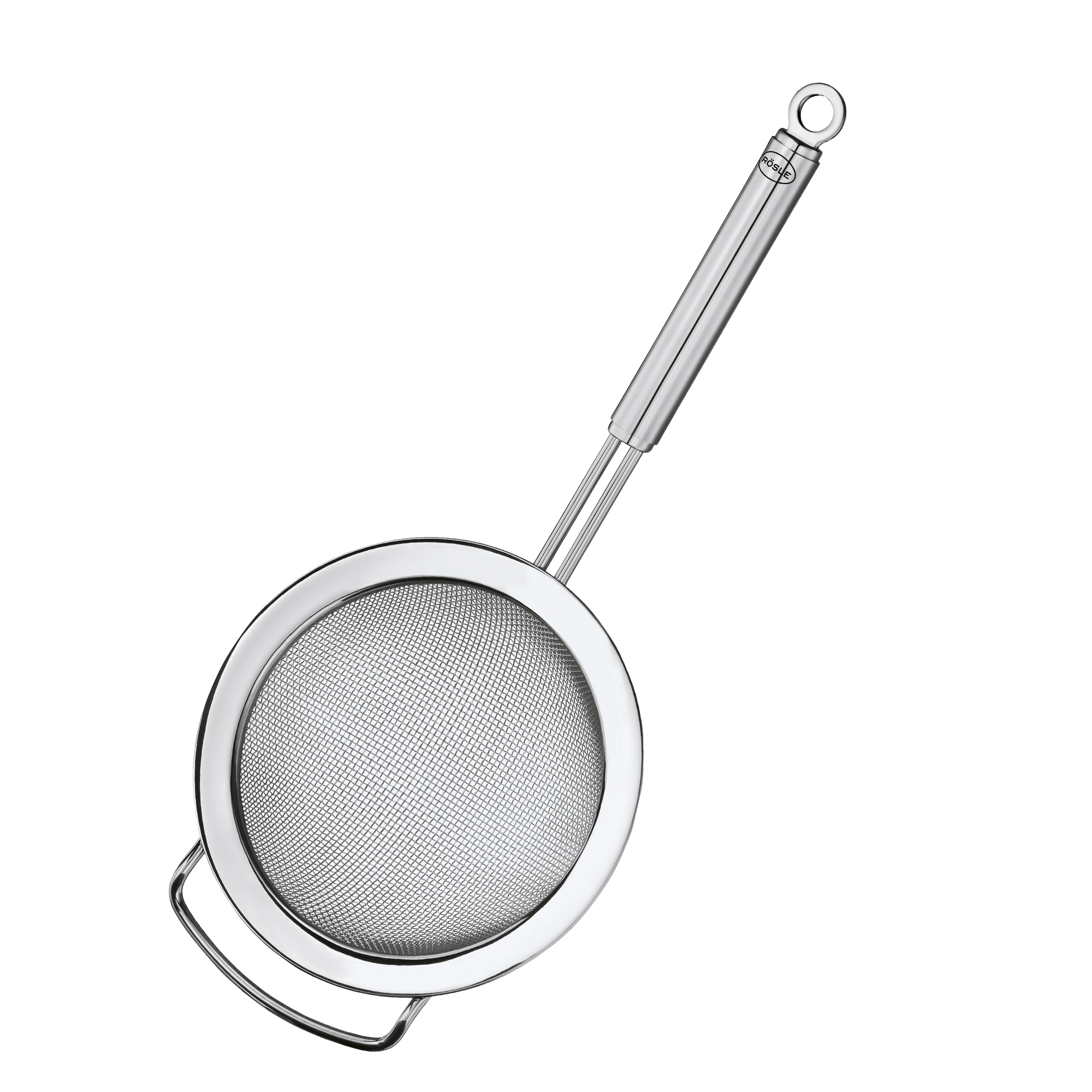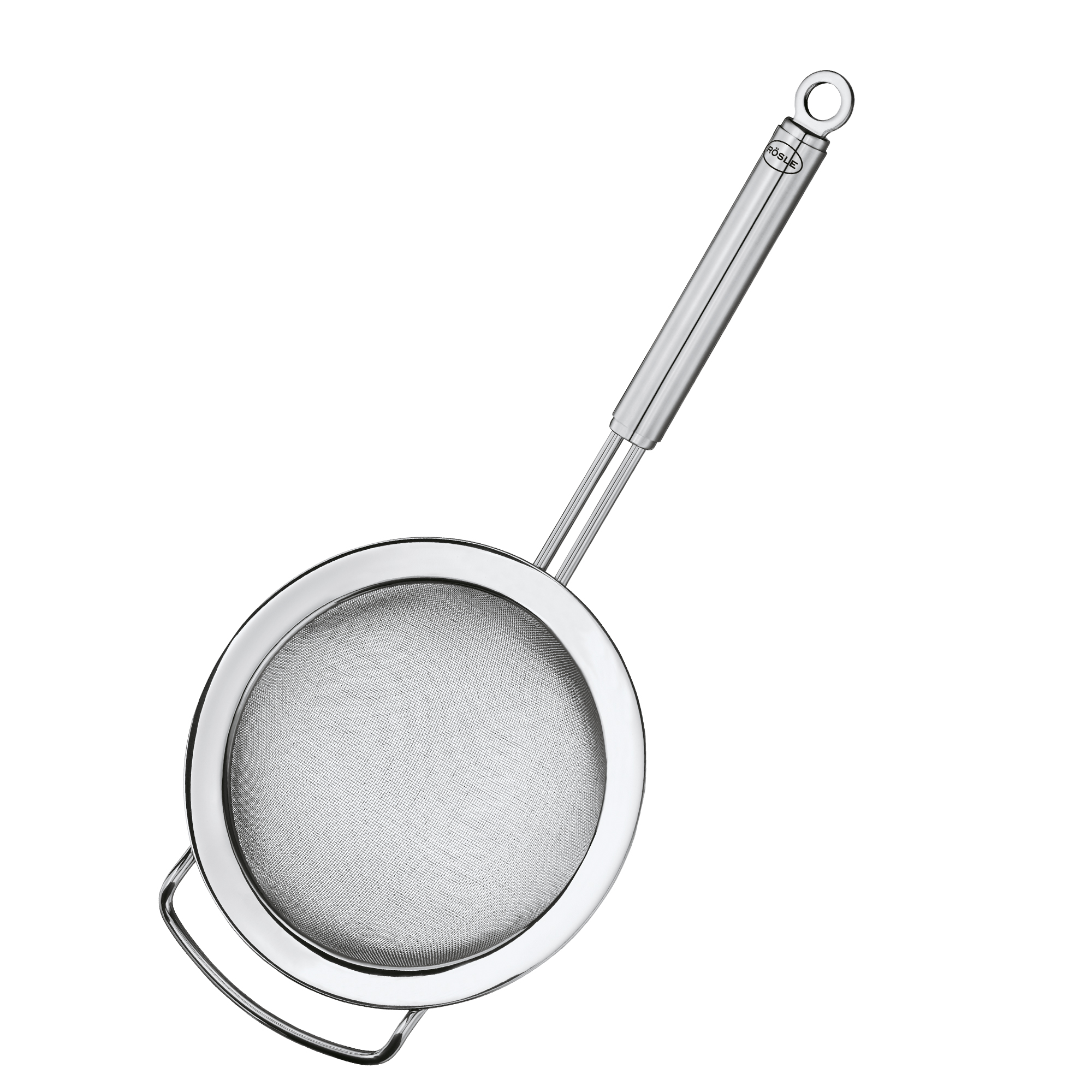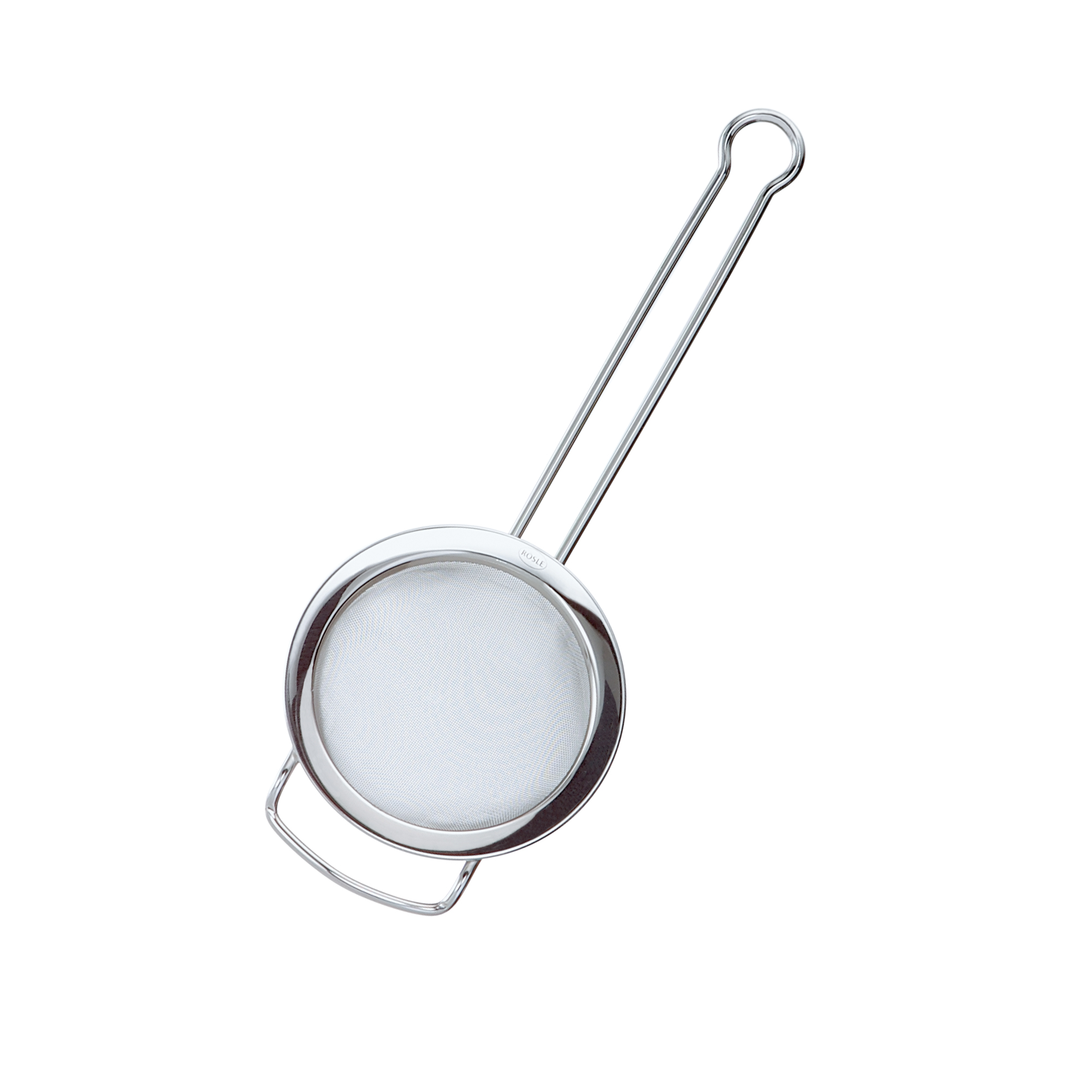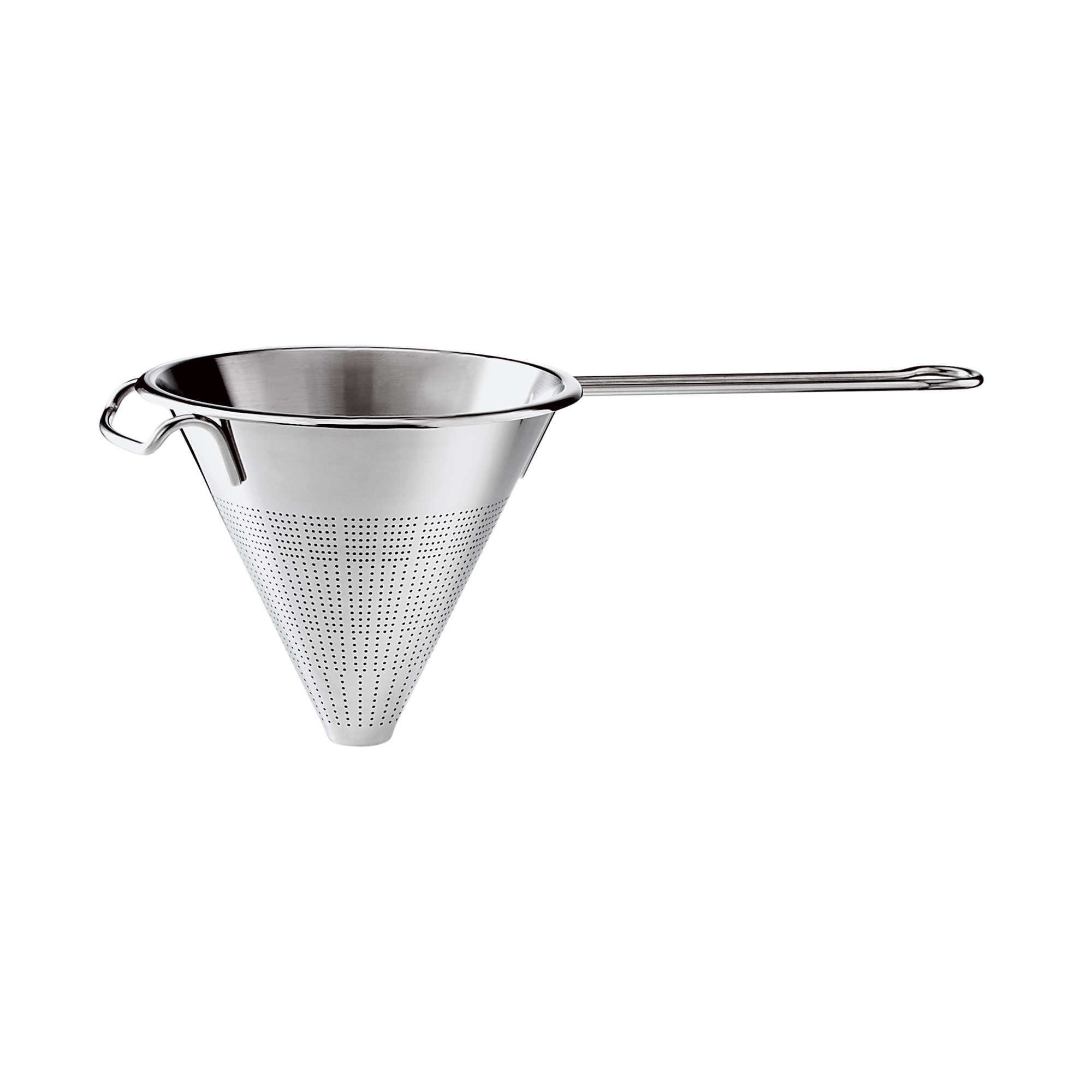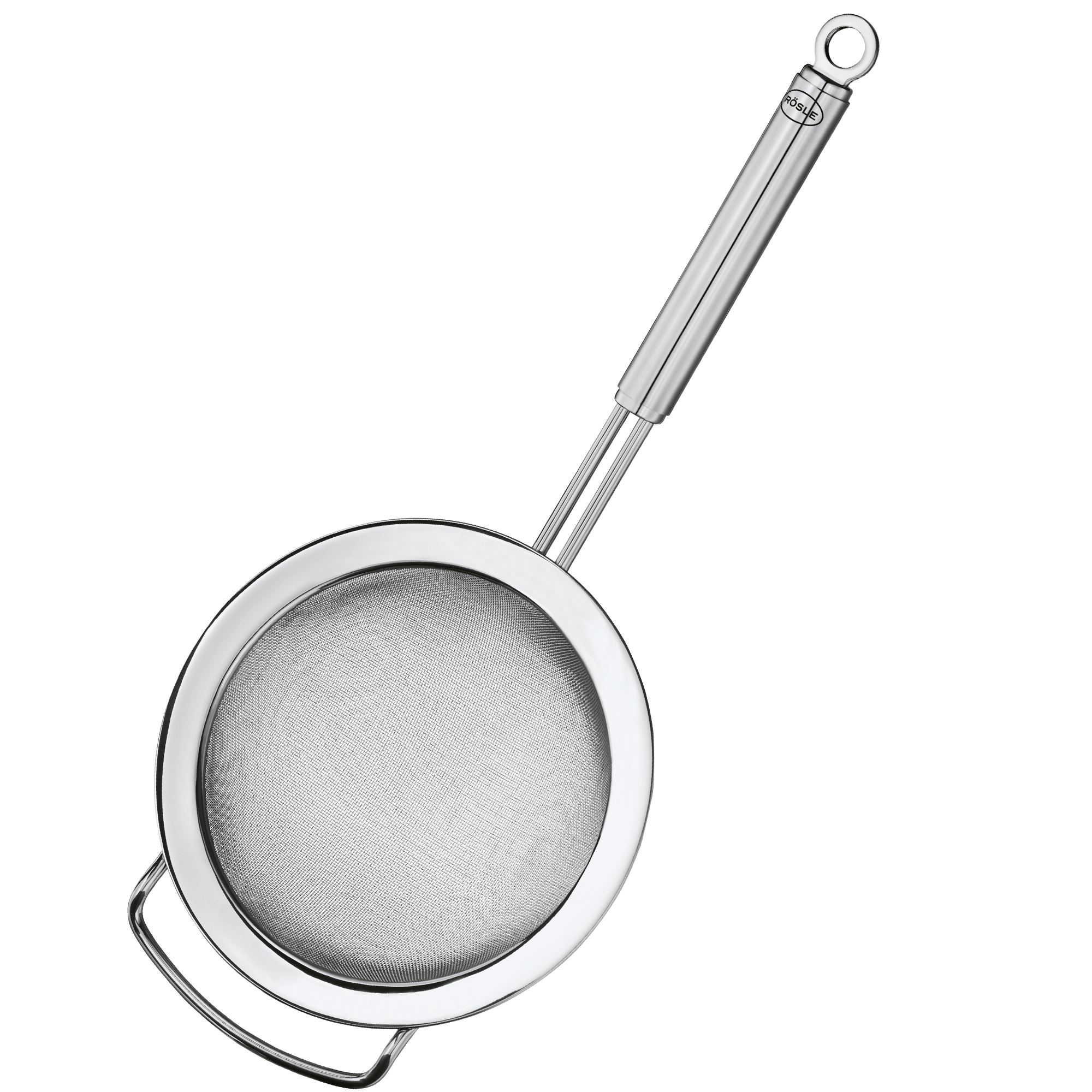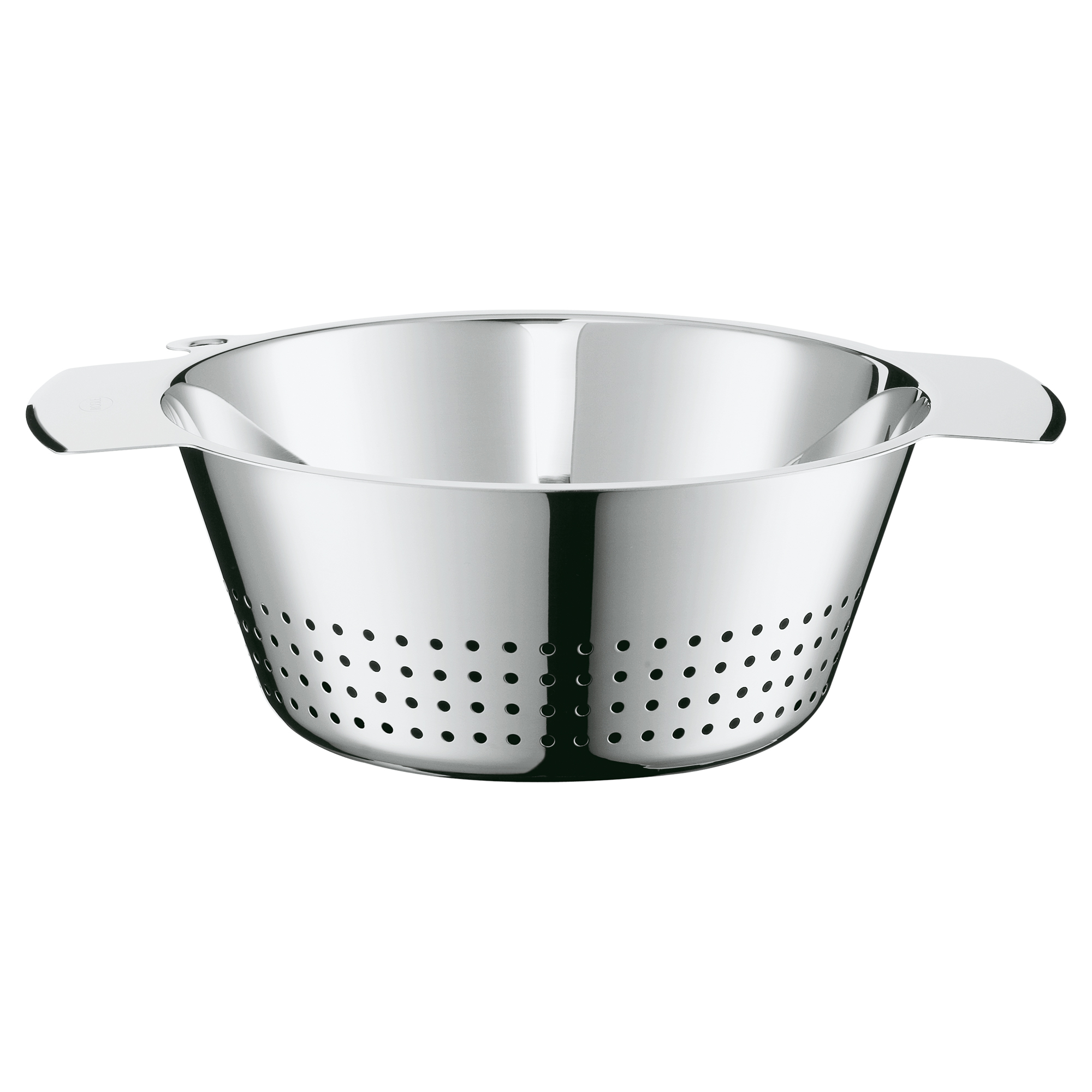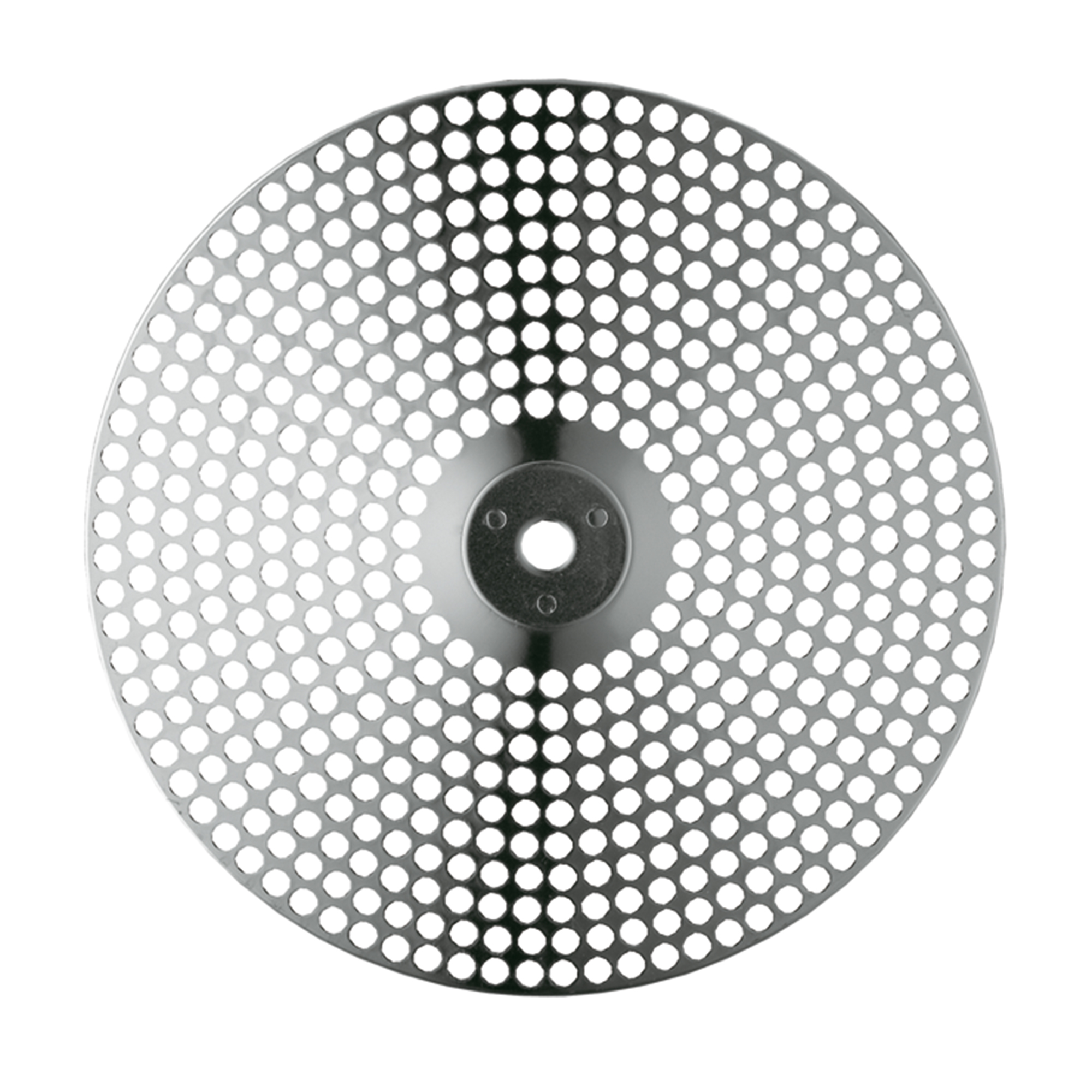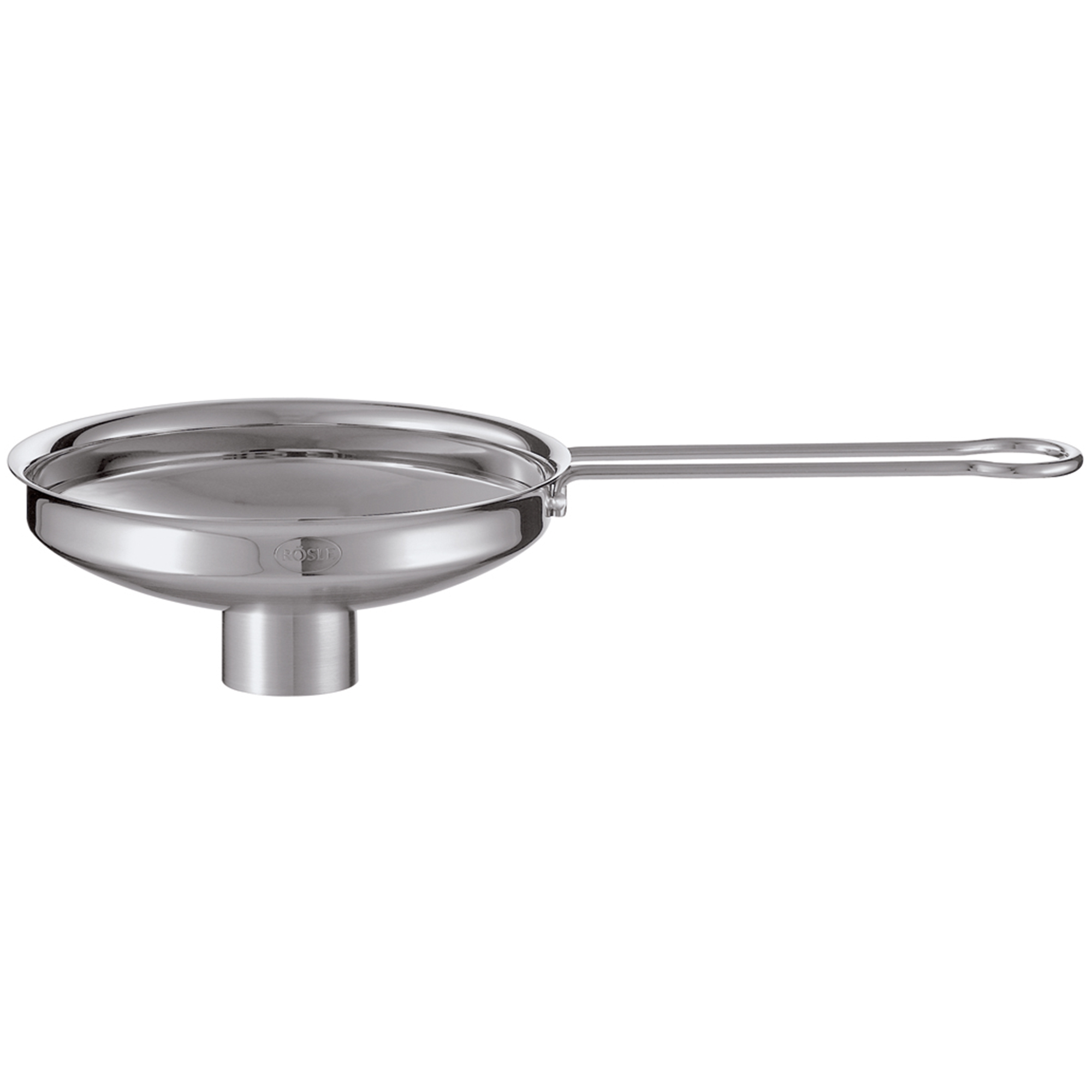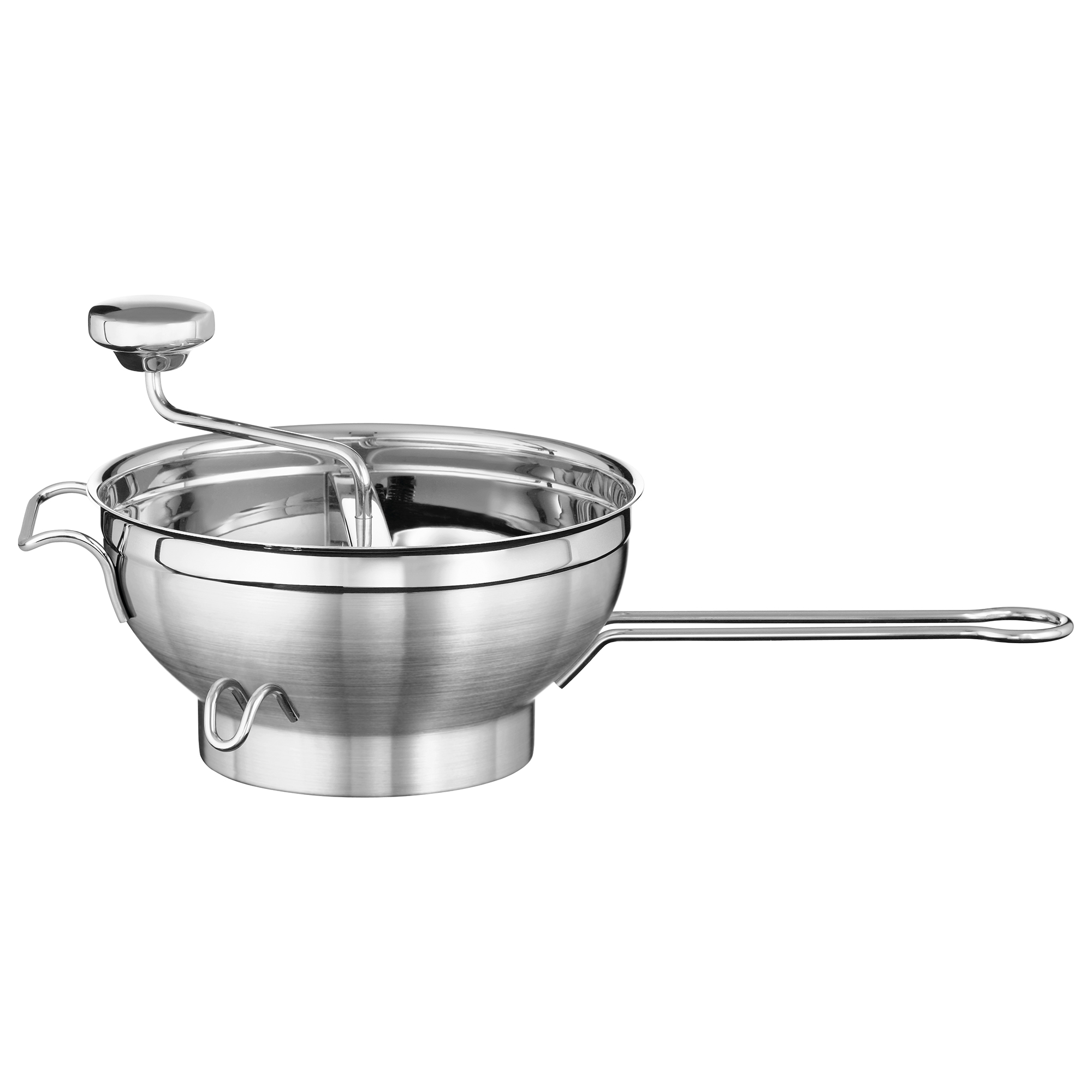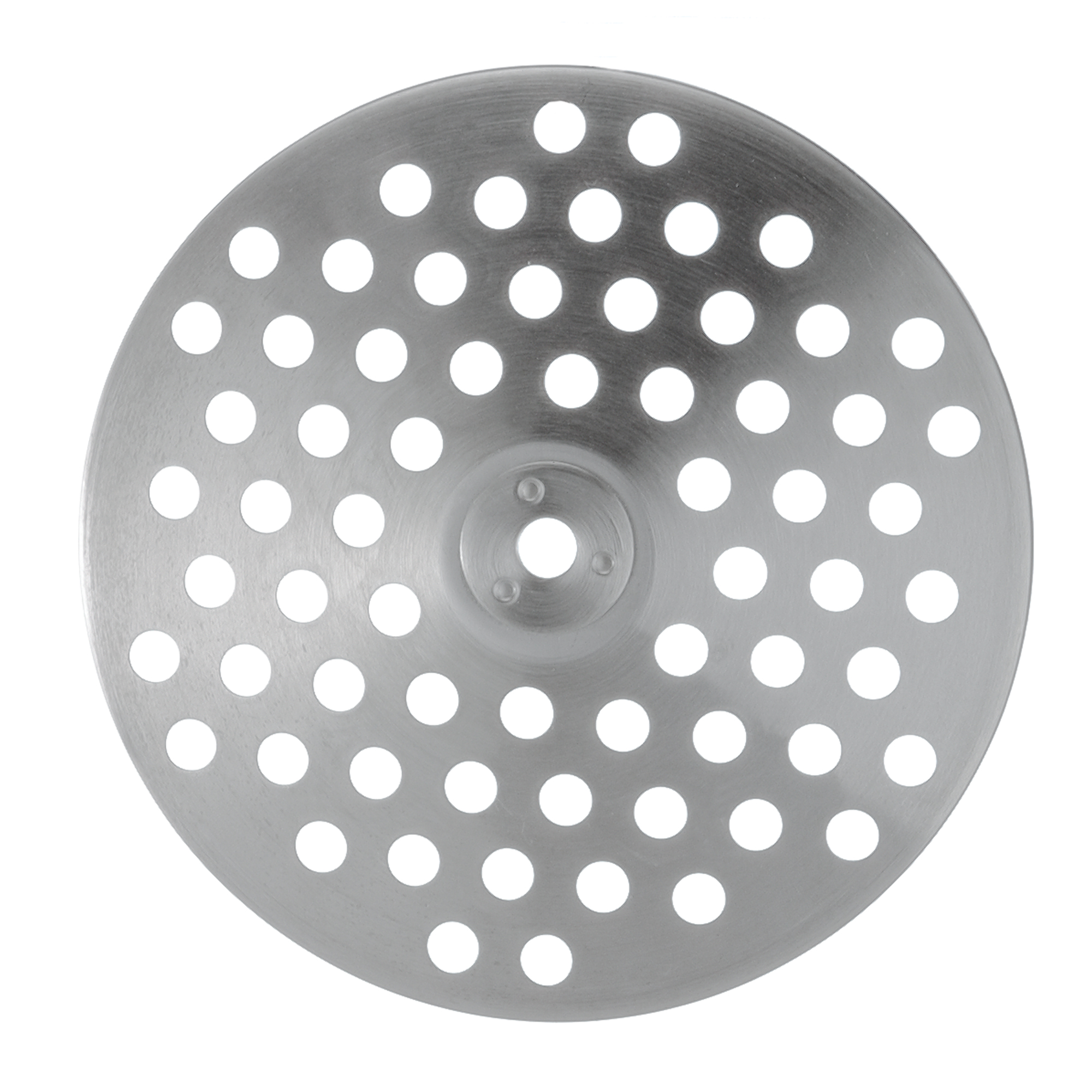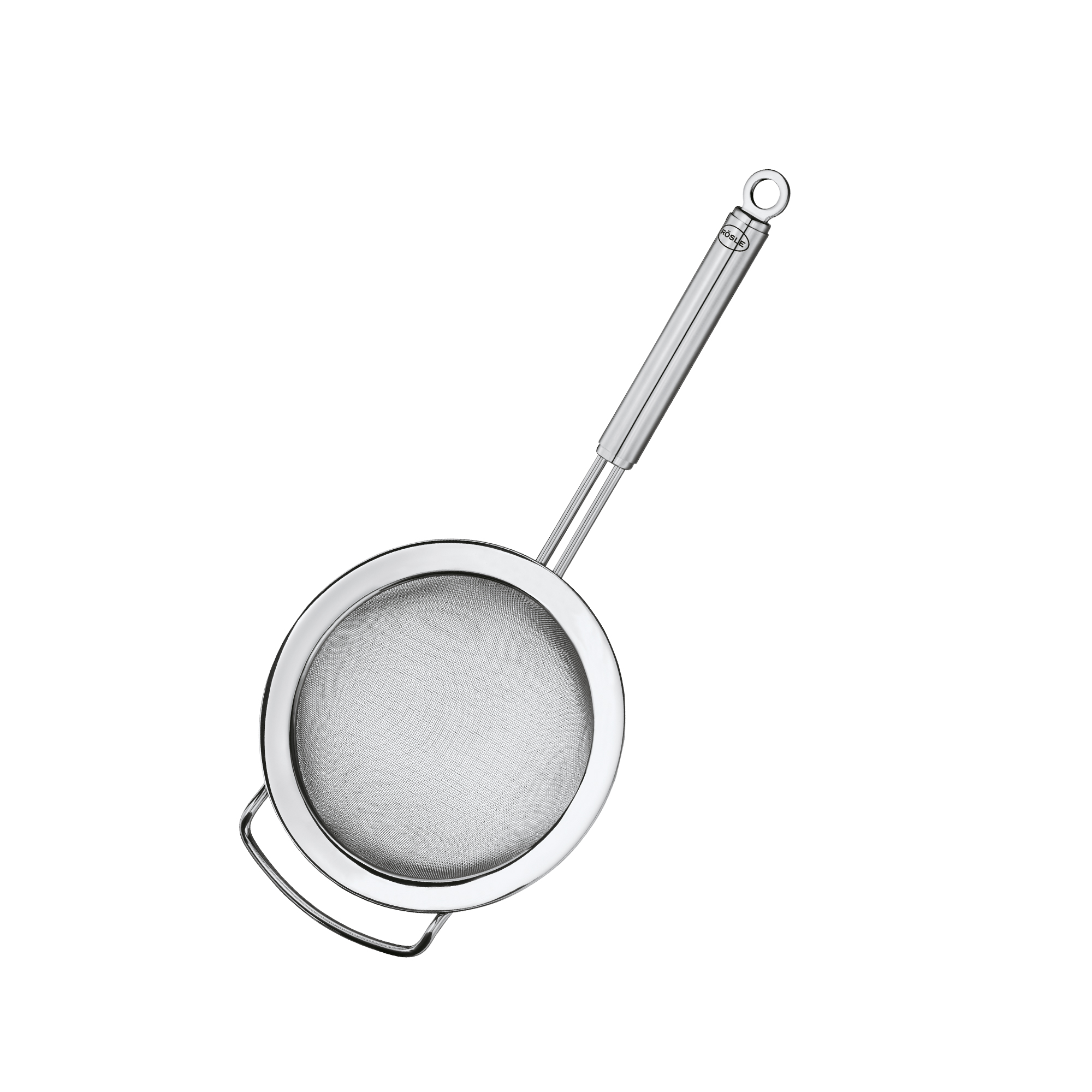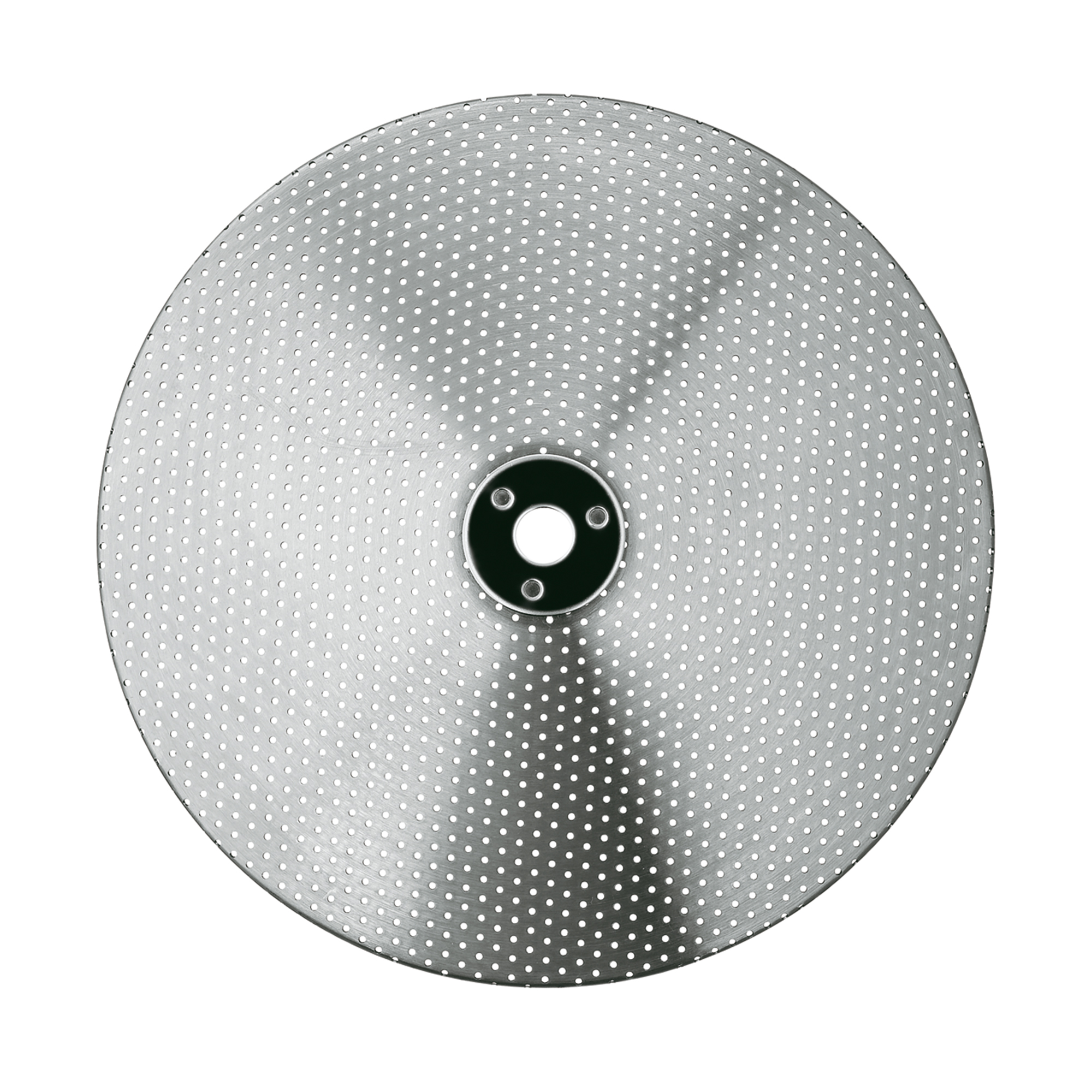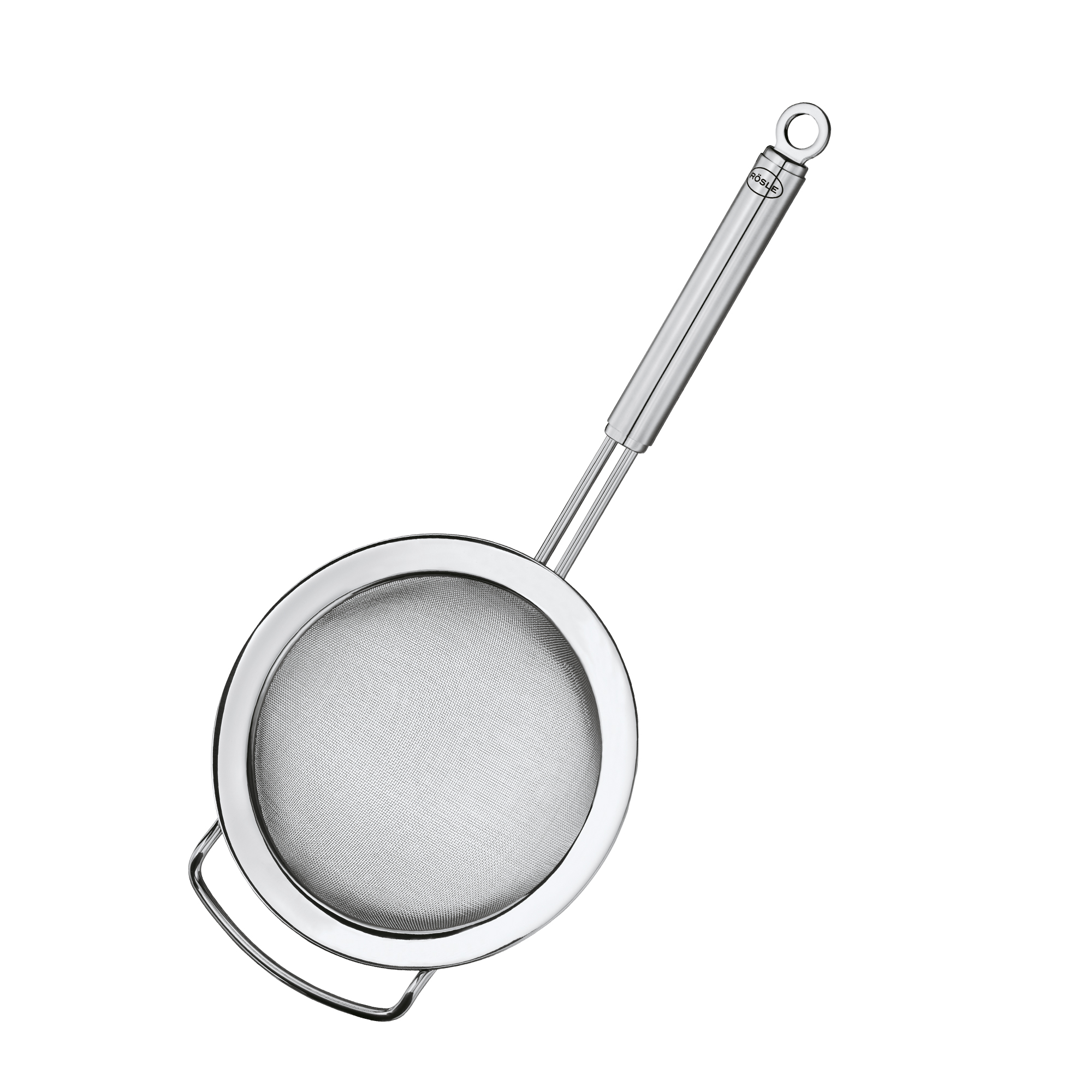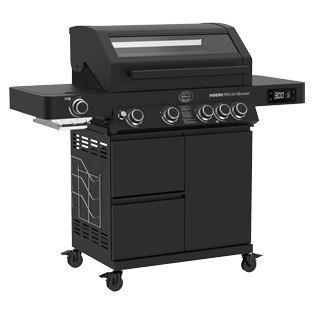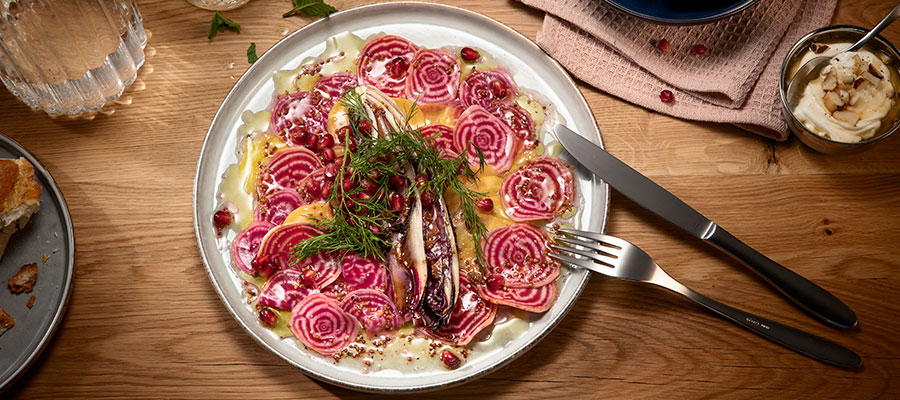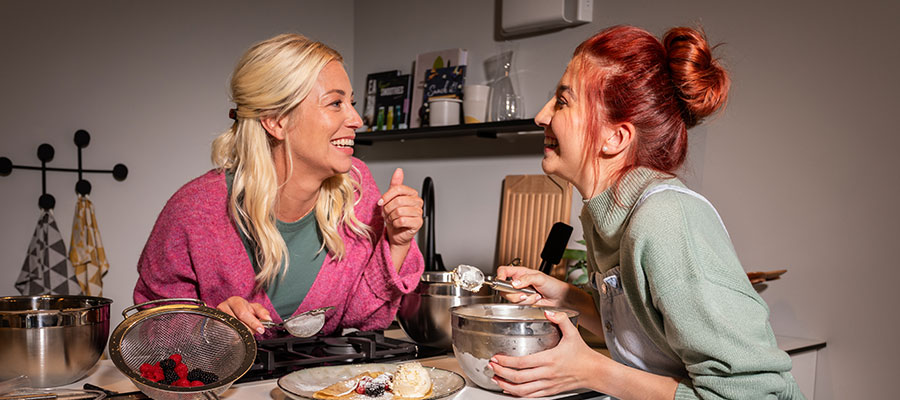A passion for fine cuisine: strainers and colanders from RÖSLE
A passion for fine cuisine: colanders and strainers from RÖSLE
Strainers and colanders are often confused. But as the old saying goes, this also applies in the kitchen: “If two things do the same thing, they are far from being the same!” For sieves and colanders, this means that although they are similar in some ways, they are designed for different tasks and purposes.
For example, a sieve can be used for pouring, but a colander cannot be used for sieving. Here we explain what other features distinguish strainers and colanders and what you should look out for when choosing strainers and colanders if you are concerned about the quality and functionality of your kitchen accessories.
Strainers and colanders - clear division of tasks in the kitchen
“Straining” means as much as ‘pouring’. “Straining” is used when a liquid needs to be clarified or purified. When something is sieved, it should either be separated or made to trickle, such as fine powdered sugar that is passed through a sieve.
The kitchen utensils used for this are called colanders or strainers and the most important thing they have in common is that they are permeable to liquids.
One of the strainer's tasks is to separate liquids from solids. This is why a colander usually has a solid body made of stainless steel with holes on the sides and bottom. Not too small, so that the pasta water can drain away easily. But not too big either, so that the grain does not slip through with the cooking water.
A high-quality colander is easy to lift and hold thanks to its sturdy handles. Its flat base ensures that the colander is stable even when the salad is washed in it or when potatoes and other ingredients are processed and cleaned in it before cooking.
Unlike colanders, kitchen strainers do not have holes, but instead have a fine or coarse mesh fabric that is given stability by a metal frame. There is often a longer handle on the colander so that it can also be used to hang it in a saucepan and blanch the vegetables over hot steam.
Although strainers can also be used for pouring, they are mainly used for sieving ingredients such as flour or powdered sugar or for straining soft fruit and semi-liquid foods. A high-quality kitchen sieve must therefore be flexible to handle, but at the same time robust enough to withstand the gentle pressure exerted when straining.
Other variants and quality features of strainers and colanders
As exceptions prove the rule, there are special sieves that do not correspond to the structure described above. These include the pointed sieve, which is suitable for coarse filtering of liquids and has a solid funnel-shaped body with fine perforations on the side walls.
If it is a gauze sieve, the actual sieve is located as an insert at the bottom of the funnel. “Gauze” comes from Arabic and refers to a fine, mesh-like twisted fabric.
A temperature-resistant gauze strainer can be used to strain sauces or to add ingredients that are to be cooked but not served and hang them in the cooking pot. The gauze strainer is similar to a tea infuser, whose job it is to bring the hot water into contact with the tea so that it absorbs the aroma but not the leaves.
Speaking of tea infusers: If you want to do without tea bags in future, we recommend buying a tea strainer. If you like your tea particularly strong, put the tea leaves directly into the pot and use the tea strainer after brewing to filter out the leaves when pouring the tea into the cup.
Not only tea leaves, but also some herbs and spices are aromatic ingredients that should not remain in the cooked dish so that their flavor does not come to the fore too intensely. If you add such herbs and spices to the cooking liquid in an aroma egg, you can simply pull it out before serving. Fresh herbs can easily be washed and dried in a herb shower.
Whether strainers or colanders, whether for pouring, separating or combining: strainers and colanders come into contact with food and liquids of all kinds and must therefore be made of a tasteless, odorless and rustproof material. High-quality stainless steel is the first choice here.
Small everyday helpers with big advantages: Strainers and colanders from RÖSLE
Kitchen strainers from RÖSLE are versatile helpers for draining food, sieving, cleaning or straining ingredients. Our kitchen strainers, which are available with coarse or fine mesh, include all strainers in the CLASSIC range. And because fine-meshed kitchen sieves have a particularly wide range of tasks to perform in the gourmet kitchen, we offer them in four different sizes. So you can choose a flour sieve as well as a sieve for straining or blanching.
Our pointed sieves, which are also suitable for quenching or quickly reheating already cooked food in steam, have a capacity of 1.5 liters and are finely and evenly perforated all round. RÖSLE gauze strainers even have a capacity of 2.8 liters; a sturdy side handle ensures that the strainer lies securely in the hand.
You can find colanders made of high-quality stainless steel in three different versions: As colanders with a conical shape and with a three-point support on the base, which are just as suitable for straining as they are for washing salad. Or as vegetable colanders, which have a particularly high capacity of 11.8 liters. Plenty of space if you want to process vegetables from your own harvest or from seasonal bulk purchases for preserving or freezing.
However, we also care about small and fine everyday helpers such as tea strainers, aromatic eggs and herbal showers, which is why we have combined the latter with a weighing knife, for example, which can be easily stored in the handle after use and cleaning.
Our foldable colander with stainless steel rim and silicone walls was also created from the basic idea of making small things big and large things smaller for convenient storage. The dimensionally stable and foldable colander is not only particularly space-saving, the combination of bright stainless steel and black silicone also makes it stand out visually from other colanders.
As a foldable designer colander, the kitchen helper has therefore already received several awards - the Reddot Design Award (2009), the German Design Award (silver 2011) and from consumers, who voted the foldable colander from RÖSLE the kitchen innovation of the year 2009.
It is worth mentioning that you will of course also find the counterpart to strainers and colanders, the funnel for clean filling and pouring of liquids, in our range; for example as a fondant funnel with internal scaling and drip protection or as a jam funnel with a particularly narrow filler neck

